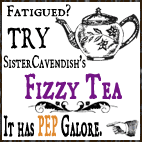
Vol. 2, Issue 18, May 4, 2004







Governor Schwarzenegger Announces California Dihydrogen Monoxide Network

Governor Schwarzenegger has signed an executive order creating a public and private partnership to build a Dihydrogen Monoxide Network in California by 2010. At a ceremony at UC Davis, he christened Station #1 on the Dihydrogen Monoxide Highway by pumping twelve gallons into a hydrogen fuel cell vehicle at the pump.
"Californians invent the future and we are about to do it again," said Schwarzenegger. "We can deal with our fuel problems by investing in the power of dihydrogen monoxide, thus bringing jobs, investment, and continued economic prosperity to the state. Trust me."
Dihydrogen monoxide has recently been a subject of public scrutiny in California due to its associated health hazards. However, members of Schwarzenegger's recently appointed team rapidly saw the potential in the dangerous substance.
"Hydrogen clearly provides the potential for huge energy and environmental improvements," said Perry Terwilliger, the governor's science advisor. "And we all know that oxygen facilitates combustion. So we realized that dihydrogen monoxide could actually be a sort of super-fuel."
Terwilliger, who is not a scientist but had "several chemistry courses" in college, admits that his team has not been able to find any evidence of a working dihydrogen monoxide engine. However, he anticipates that the automotive industry will rapidly embrace California's vision since it is already moving towards the development of hydrogen-powered vehicles.
The goal of the initiative is to support an early network of 150 to 200 dihydrogen monoxide fueling stations throughout California (approximately one station every 20 miles on the state's major highways), which would make the fuel available to the vast majority of Californians.
"Storage is a concern," admitted Terwilliger, "because dihydrogen monoxide is fatal if inhaled." Although the U.S. Government and the Centers for Disease Control (CDC) do not classify dihydrogen monoxide as a toxic or carcinogenic substance (as it does with better known chemicals such as hydrochloric acid and saccharine), it is a constituent of many known toxic substances and environmental hazards.
There is some question as to whether the technology will be available by 2010 to take advantage of the distribution network.
"The governor was here just last week, and we were discussing a hydrogen distribution network," said a perplexed Donald Pembroke, director of the Institute for Transportation Studies at UC Davis. "I think something got lost in translation here."
Governor Schwarzenegger was optimistic that the bold $90 million initiative would inject new life into California's tradition of technological innovation, and seemed unfazed by the fact that the hydrogen fuel cell vehicle he had filled at the ceremony subsequently failed to run.
"California has always been an innovator and a risk-taker," said Schwarzenegger. "I am confident that this initiative will confirm that reputation."
"Oh this will confirm California's reputation all right," responded Pembroke.






